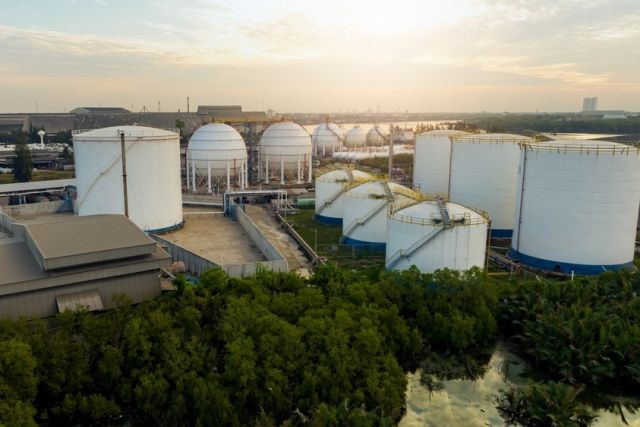
A lack of gas egress out of the Permian has led to negative commodity prices at the Waha hub price point for much of the summer. (Source: Shutterstock)
The shale boom coalesced the American market into an unprecedented shape. Never before have sectors been so closely linked, said an industry expert at an Aug. 28 East Daley Analytics webinar.
“Crude oil, natural gas and NGLs are linked together in ways in which they’ve never been in history,” said Rob Wilson, vice president of analytics at East Daley Analytics. “You cannot just focus on crude or gas.”
Over the last few years, the U.S. has taken the lead in the production of all three hydrocarbons for the first time in history.
The links between the three are most apparent in the Permian Basin, the most productive crude basin in the country. In West Texas, crude production results in associated natural gas production, which is in turn used to produce NGLs.
Production and capacity in the Permian doubled in the past six years, Wilson said. While crude production has remained steady, the natural gas sector has suffered. A lack of gas egress out of the Permian has led to negative commodity prices at the Waha hub price point for much of the summer.
NGLs have moved in the opposite direction.
“The fastest growing hydrocarbon we’re talking about today is NGLs,” he said.
In 2023, NGL exports set a record of 2.63 MMbbl/d of ethane and LPG exports. The U.S. Energy Information Administration shows the U.S. is on track to break the record in 2024, averaging 2.79 MMbbl/d in the first quarter.
NGL production growth can be tied back to the wet gas produced in the Permian, Wilson said, where E&Ps and midstream companies have been building processing plants to take advantage of the abundant natural gas available in the area.
And much of the M&A activity in the region is focusing on the acquisition of gas processing assets. Most recently, ONEOK announced its acquisition of a controlling interest in EnLink Midstream, a company that produced about 220,000 bbl/d of Permian NGLs in May.
The opening of the Matterhorn Natural Gas Pipeline, expected by the end of September, should further boost the amount of NGLs coming out of the region.
Analysts have discussed before how the Matterhorn is key for the natural gas sector in the Permian. The pipeline is expected to solve the basin’s capacity problems until 2026, when another pipeline is expected to open.
Wilson said a surge in natural gas production when the Matterhorn opens should result in further growth of NGLs, especially propane. The lack of gas egress out of the Permian has been the primary factor holding back growth.
“Don’t be fooled by what we’ve seen the first six months of 2024. We believe growth will come predominantly out of the Permian in the second half of the year, and the Matterhorn will allow for that growth,” he said.
RELATED
Recommended Reading
Logan Energy Closes Gran Tierra Joint Venture Acquisition
2024-12-18 - Logan Energy Corp. paid approximately $37 million for 50% working interests in Gran Tierra’s Simonette Montney assets and will assume operatorship.
Surge Closes on Divestment of Alberta Non-Core Gas Assets
2024-12-20 - Surge Energy said it has focused on developing its core Sparky and southeast Saskatchewan crude oil assets, leaving the Alberta non-core assets undercapitalized.
LandBridge Closes Deal for 46,000 Surface Acres in Delaware Basin
2024-12-20 - LandBridge Co., which held a successful IPO in August, added about 53,000 acres and now holds about 273,000 acres.
Crescent Energy Closes $905MM Acquisition in Central Eagle Ford
2025-01-31 - Crescent Energy’s cash-and-stock acquisition of Carnelian Energy Capital Management-backed Ridgemar Energy includes potential contingency payments of up to $170 million through 2027.
Petro-Victory Buys Oil Fields in Brazil’s Potiguar Basin
2025-02-10 - Petro-Victory Energy is growing its footprint in Brazil’s onshore Potiguar Basin with 13 new blocks, the company said Feb. 10.
Comments
Add new comment
This conversation is moderated according to Hart Energy community rules. Please read the rules before joining the discussion. If you’re experiencing any technical problems, please contact our customer care team.






